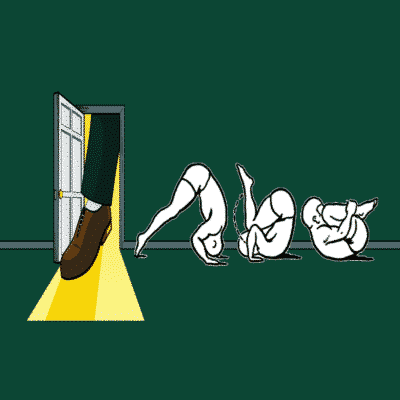The cool kids on the block
You know all those movies where the main character first is a nerdy nobody and transforms into someone amazing or popular?
Sandy in Grease. Peter Parker in Spider Man. Harry Potter. You get the point!
That’s kind of how we feel like at the moment in the accessibility (a11y) community. A few years ago, only dorky public sector organisations wanted to hang out with us.
Suddenly, now we’re at the cool table with people from industries like gaming, e-commerce, fashion and entertainment!
And. It. Feels. Great!
We actually owe a lot of this new found coolness to something quite uncool: accessibility legislation.
Here in Europe at least, we’ve had some awesome new legislation the past few years, and more is on the way in the years to come.
This has really put accessibility on the radar. Suddenly we – the a11y nerds – are invited to red carpet events and everyone wants to talk to us. Thanks politicians!
However, when we start talking, most of the cool kids want to talk about how not to get in trouble, while we have much more interesting things to discuss!
The regular starting-in-the-wrong-end-strategy
Most organisations approach accessibility from a legal standpoint and begin asking things like:
- How do we avoid getting sued?
- What’s in the Web Content Accessibility Guidelines (WCAG) and what’s the lowest acceptable level we need to reach?
- Can we get a list of issues so we quickly can fix them and get our “accessibility approved” stamp?
- Is there a plugin we can buy that makes our site compliant with the law without us having to do anything?
- How do we get a top score from automatic testing tools that we can brag about to top management?
This is a poor, counterproductive way to approach accessibility and inclusion.
Having people who are new to accessibility learn about it from the WCAG is like me teaching my baby to walk using my university physics book. All the theory is in there, but it’s a bit too much to digest at the moment.
We should aim to find another way to approach accessibility, and a great source of inspiration is looking at the methods of the user experience (UX) field. Both UX and a11y are about understanding the interaction between humans and technology. But even though there are some checklists and heuristics in the UX field, if you ever worked seriously with it, you know there’s a much bigger focus on methods instead of checklists. Methods to do user research, methods to test prototypes with users and so on.
So how do we get the accessibility field to shift focus from checklists to methods? Especially now when the laws point to standards – which are essentially fancy checklists with a bunch of different criteria.
The key is actually to use the boring accessibility laws and regulations! They are a great way to get your foot in the door to the board room and management meetings. Where the allocation of resources like time and money are decided. Epic super crucial step!
However, once you’ve used legislation to get in there, it’s time for the foot-in-door-somersault-strategy!
Let’s walk you through a hypothetical scenario:
“Alright, you’ve convinced me” the CTO tells you. “We need to do this accessibility thing. How do we go about it?”
Your instinct might be to say: “Well, there’s an accessibility standard called the WCA…” But let’s stop you right there! It’s time to turn this conversation on its head. Take a deep breath, and get ready to somersault. Instead of talking about the exact requirements of the law, say something along the lines of:
“I’ll tell you exactly how!”
Pause for tension to build up.
“We just need to make some small adaptions to our current processes, making sure accessibility is baked into them.”
“That sounds both easier and cheaper than making a big, separate accessibility project!” the CTO exclaims. “Which processes and how?”
“Well, maybe most of them in the long term, but a good starting point is to include users with disabilities in our user tests. We’ll start with screen reader users, since a lot of legislation covers that target audience. We can also add accessibility training as part of our onboarding program, and workshop with some of our teams on how we can sprinkle some accessibility into our current working processes!”
“Hey, you really do seem to have this thing covered! But just to make sure, is this really what the law tells us we need to do?”
“By approaching accessibility this way, we’ll create a way of working where we comply with the law in a sustainable way. We’ll take small inclusive steps, everywhere, all the time. Continually improving instead of making this a one-time project. That also happens to be human-centered, more impactful, less expensive and really fun for our teams!”
Bam! Instead of going back to your computer and setting up a spreadsheet with each WCAG criteria, you’re set up to recruit people with disabilities to user testing, adapting training courses and booking workshops with your colleagues.
Somersault done and you’ve just changed the ball game completely!
Recap! The strategy in three simple steps
- Use laws to get your foot in the door of important meetings
- Somersault and talk about methods when you get asked how to comply with the laws
- Smile as you work with accessibility in an exciting, high impact and user centered way!
Good luck, have fun!
About once a month we write an article about accessibility or usability, that’s just as awesome as this one (#HumbleBrag)!
